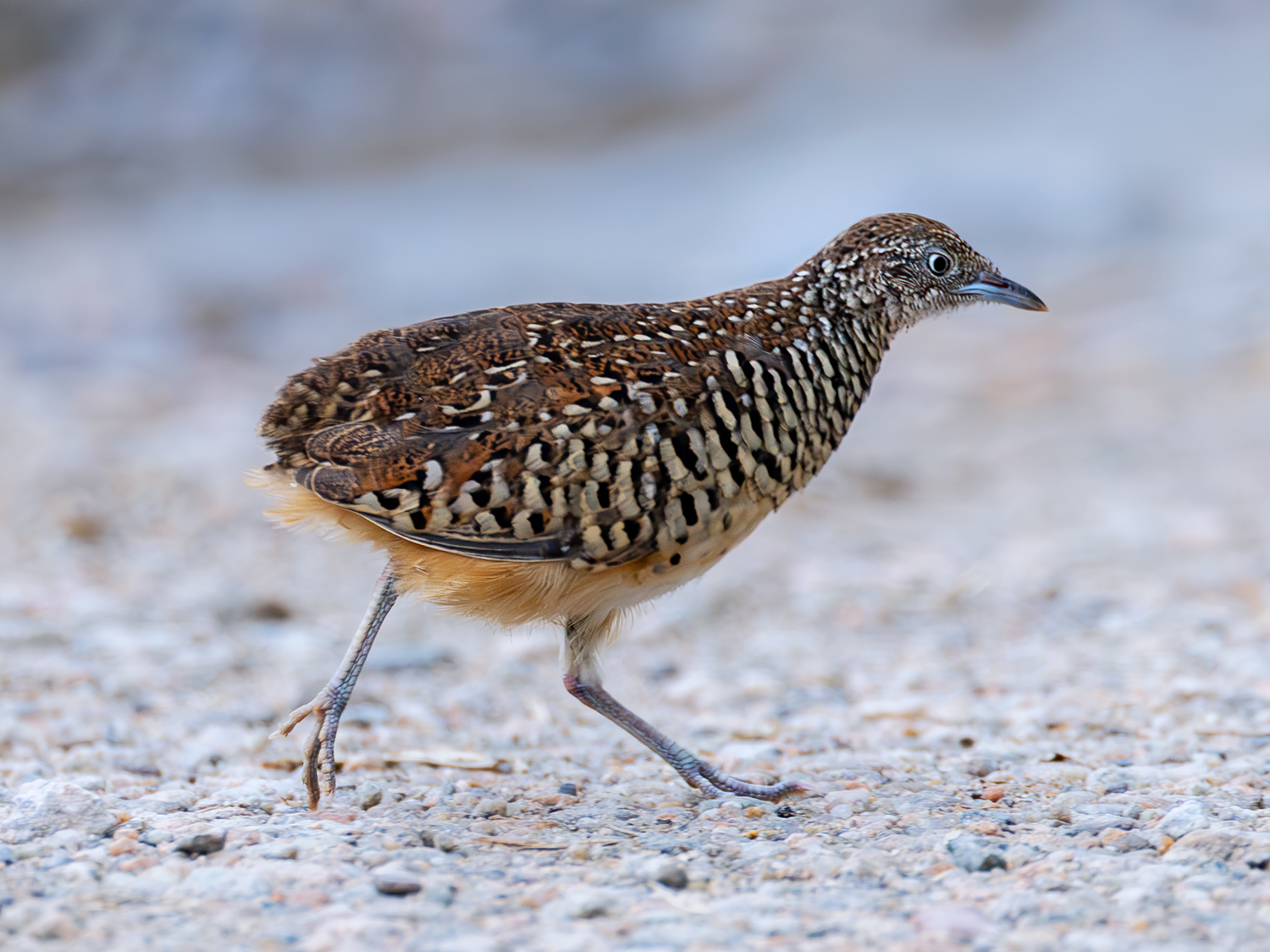BARRED BUTTONQUAIL Turnix suscitator 棕三趾鶉
Category I. Rare autumn passage migrant, one midwinter record.
IDENTIFICATION

Oct. 2023, Michelle and Peter Wong.
13-17 cm. Similar in size and structure to the more common Yellow-legged Buttonquail, but differs in grey bill and legs, lack of obvious rufous tones to the chest, black barring on the flanks, sandy tone to wing coverts and, in adult female, blackish on the chest.
VOCALISATIONS
A very low frequency continuous, rhythmic hooting has been recorded in Taiwan in the breeding season.
DISTRIBUTION & HABITAT PREFERENCE
Records have occurred at widespread lowland sites in HK in grassy vegetation; occasionally disoriented migrants have been picked up in the urban area.
OCCURRENCE
Since the first on 6 December 1958, there have been approximately 25 records of Barred Buttonquail. Most have occurred in autumn from the final week of September to the end of November, with most of these in the period 1-26 October. There are two earlier records on 10th and 27th August and one later, the first record referenced above. There is also one midwinter record, which occurred on 4 February 1973.
In autumn 1997 on grassy wasteland at Tin Shui Wai a number of buttonquails were present, most of which defied identification due to the brevity of the views. However, three Barred Buttonquails were trapped, two on 5 October and one on 23 November. The plumage details of others seen well enough in this period often suggested Barred Buttonquail.
BEHAVIOUR, FORAGING & DIET
Skulking and flushed only when closely approached; flies away on whirring wings and runs off immediately on landing.
BREEDING
A record of one at Ping Yeung on 10 August 2019 was in suitable breeding habitat. However, the first confirmed breeding occurred in June 2022 in Tai Lam Country Park when a male with three chicks was photographed by a remote-sensing camera in regenerating woodland on multiple occasions and a female was photographed separately (Hui 2022).
RANGE & SYSTEMATICS
Largely resident in its range which extends from India, Sri Lanka and the Himalayan foothills east to south China and the southern Japanese islands, and south through Indochina to Malaysia, the Philippines and much of Indonesia (Debus and Kirwan 2020). In China it is resident from Yunnan north along the upper reaches of the Yangtze and east to Guangxi, Hainan and areas near the coast in southeast China as far as and including Taiwan (Liu and Chen 2020). Hong Kong records indicate the range extends as far east as Guangdong but is probably scarce.
The subspecies T. s. blakistoni occurs from east Myanmar through north Indochina to south China, including Hong Kong. Approximately 15 other subspecies are recognised.
CONSERVATION STATUS
IUCN: Least Concern. Population trend increasing.
Debus, S. and G. M. Kirwan (2020). Barred Buttonquail (Turnix suscitator), version 1.0. In Birds of the World (J. del Hoyo, A. Elliott, J. Sargatal, D. A. Christie, and E. de Juana, Editors). Cornell Lab of Ornithology, Ithaca, NY, USA. https://doi.org/10.2173/bow.barbut1.01
Hui, K. (2022). A Barred Buttonquail family photographed in mid-summer at Tai Lam Country Park. HKBWS Bulletin 265: 14.
Liu, Y. and Y. H. Chen (eds) (2020). The CNG Field Guide to the Birds of China (in Chinese). Hunan Science and Technology Publication House, Changsha.

